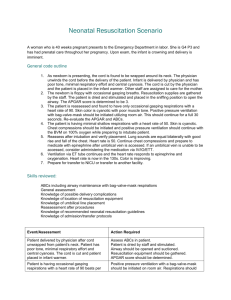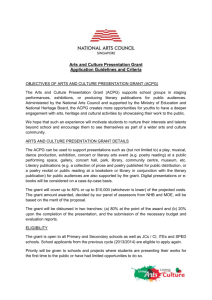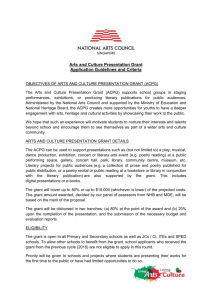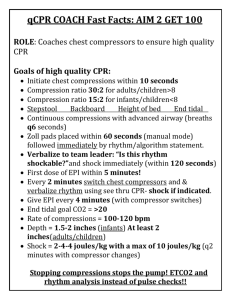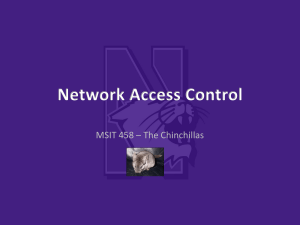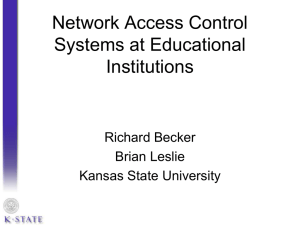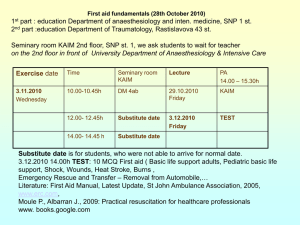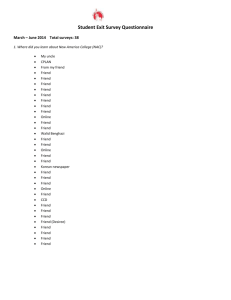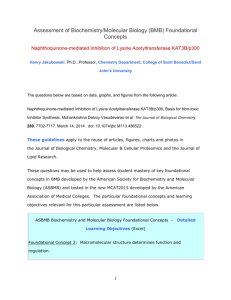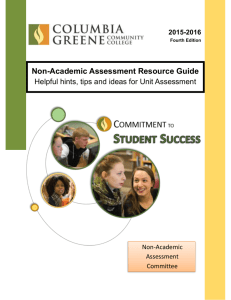Name: Pediatric Emergency Medicine Board Review Resuscitation
advertisement
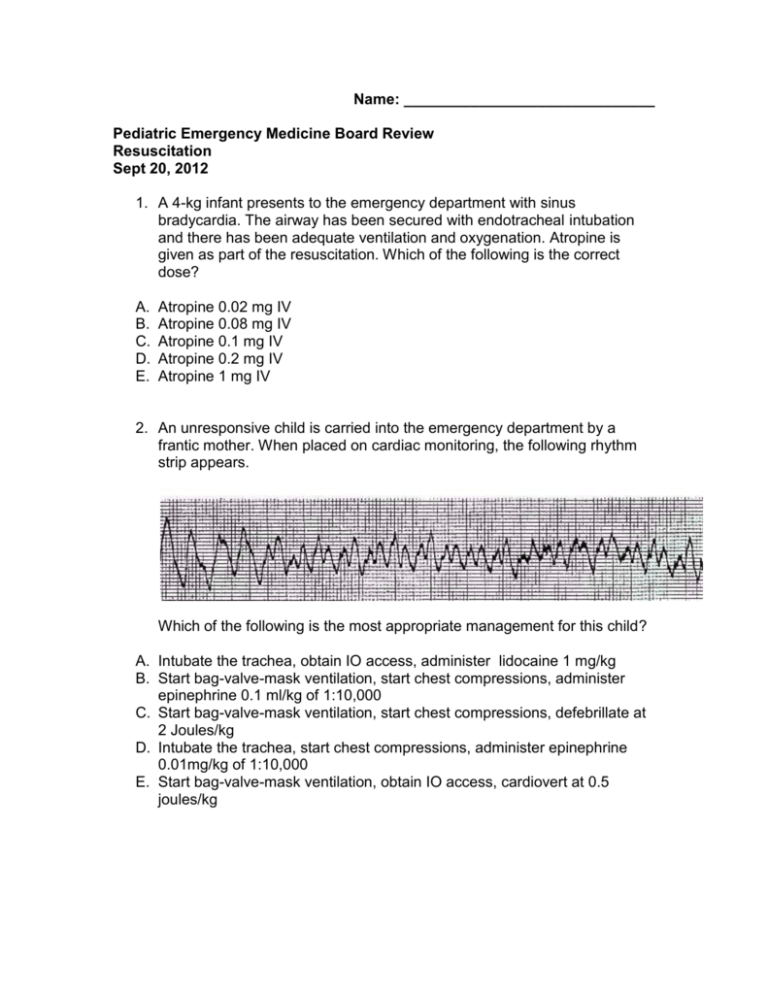
Name: ______________________________ Pediatric Emergency Medicine Board Review Resuscitation Sept 20, 2012 1. A 4-kg infant presents to the emergency department with sinus bradycardia. The airway has been secured with endotracheal intubation and there has been adequate ventilation and oxygenation. Atropine is given as part of the resuscitation. Which of the following is the correct dose? A. B. C. D. E. Atropine 0.02 mg IV Atropine 0.08 mg IV Atropine 0.1 mg IV Atropine 0.2 mg IV Atropine 1 mg IV 2. An unresponsive child is carried into the emergency department by a frantic mother. When placed on cardiac monitoring, the following rhythm strip appears. Which of the following is the most appropriate management for this child? A. Intubate the trachea, obtain IO access, administer lidocaine 1 mg/kg B. Start bag-valve-mask ventilation, start chest compressions, administer epinephrine 0.1 ml/kg of 1:10,000 C. Start bag-valve-mask ventilation, start chest compressions, defebrillate at 2 Joules/kg D. Intubate the trachea, start chest compressions, administer epinephrine 0.01mg/kg of 1:10,000 E. Start bag-valve-mask ventilation, obtain IO access, cardiovert at 0.5 joules/kg 3. A child is brought into the emergency department by paramedics complaining of palpitations. The cardiac monitor strip is shown. Patient is maintaining the airway with good ventilation and oxygenation. The patient has pulses and has maintained adequate perfusion. Which of the following should be administered next? A. B. C. D. E. Amiodarone Lidocaine Cardiac compressions Defebrillation Cardioversion 4. You are the medical coach at a karate match with 13-year old boys. A contender is hit in the chest and collapses seconds later. The boy has no pulse and is unresponsive. Which of the following rhythms would be expected? A. B. C. D. E. Pulseless ventricular tachycardia Ventricular fibrillation Atrial fibrillation Aystole Pulseless electrical activity 5. Which of the following best describes a child in compensated hypovolemic shock? A. B. C. D. E. Weak pulses, somnolent mental status, and bradycardia Cool extremities, tachycardic and crying Confused, tachycardic, and mottled extremities with acrocyanosis Obtunded, prolonged capillary refill time, bradycardia Prolonged capillary refill time, seizing, and asystole 6. A previously healthy child has been successful intubated with an endotracheal tube for airway protection after being involved in a motor vehicle accident. Immediately after intubation, the oxygen saturations are normal and the patient is having good chest rise. You are called immediately back to the bedside for decreased oxygen saturations and worsening central cyanosis. Which of the following is the next best step in management of this patient? A. Remove the endotracheal tube and perform bag-valve-mask ventilations B. Increase the ventilator peak inspiratory pressures to overcome resistance of pulmonary contusions C. Auscultate breath sounds and perform needle thoracostomy if breath sounds are unequal D. Suction the endotracheal tube and administer an Albuterol med neb treatment E. Perform a needle cricothyrotomy 7. In monitoring the response to fluid resuscitation in a child presenting with shock, which of the following is correct? A. B. C. D. Blood pressure is the most sensitive indicator of shock Urinary output is a straightforward, readily available monitor of fluid status A central line should be established as part of the initial resuscitation For children over 1 year of age, urinary output should be maintained at 3 ml/kg/day E. Fluid overload is rarely a problem with pediatric trauma patients 8. A child is brought into the emergency department after a submersion injury. He was intubated with an endotracheal tube in the field by paramedics and was reported to be bradycardic with pulses during transport. Upon arrival, there is no pulse palpated and cardiac monitors were placed and the rhythm strip is shown: Chest compressions are started. Which of the following is the next best course of action? A. B. C. D. E. Defibrillate 2 joules/kg Cardiovert 0.5 joules/kg Epinephrine 0.01 mg/kg of 1:10,000 Epinephrine 0.01 mg/kg of 1:1000 Atropine 0.02 mg/kg 9. A child is involved in a motor vehicle accident and presents with pulseless electrical activity. Which of the following is a possible etiology for his dysrhythmia? A. B. C. D. E. Hyperthermia Hyponatremia Tension pneumothorax Myocardial contusion Pulmonary contusion 10. A 17-year old G1P0, 40-week gravid teenager comes to the emergency department in active labor. Meconium stained fluid is present as the mother delivers the infant. Infant is limp, mottled, and making no respiratory effort. Which of the following is the best plan of management. A. B. C. D. E. Dry, clean and stimulate. Suction mouth and nares Suction mouth and nares. Administer BVM Direct laryngoscopy of the cords. Endotracheal intubation and suctioning Suction mouth and nares. Direct laryngoscopy of the cords Dry, clean, and stimulate. Endoracheal intubation if no respiratory effort 11. Immediately after delivery, a neonate is noted to have respiratory distress and cyanosis despite initial resuscitation efforts. The abdomen is noted to be scaphoid and bag-valve-mask ventilations worsen the respiratory distress. You obtain a chest radiograph. Which of the following is the next step in management? A. B. C. D. E. Echocardiogram and prostaglandin Lumbar puncture and broad-spectrum antibiotics Endotracheal intubation and nasogastric tube Chest thoracostomy and broad spectrum antibiotics Digital rectal exam and pediatric surgery consult 12. A 5-year old child is brought into the emergency department when he was noted to be “acting funny” after playing in the barn on his grandfather’s farm. The patient is vomiting and having diarrhea. He is anxious, wheezing, and having respiratory distress. You suspect organophosphate poisoning. Which of the following is the best therapeutic endpoint for administering the antidote? A. B. C. D. E. Continue until the heart rate normalizes for age Continue until muscle fatigue has resolved Continue until wheezing and respiratory distress resolve Continue until altered mental status returns to normal Continue until resolution of vomiting, diarrhea, and diaphoresis 13. Which of the following signs or symptoms distinguishes a sympathomimetic from an anticholinergic toxidrome? A. B. C. D. E. diaphoresis hypertension tachycardia mydriasis hyperthermia 14. Which of the following is described as a unique characteristic of MDMA (Ecstasy) toxicity? A. B. C. D. E. mydriasis persistent neurologic damage perceptual distortion bruxism flatulence 15. Which of the following statements regarding N-acetylcysteine (NAC) therapy for acetaminophen ingestion is correct? A. Higher doses of NAC are required if charcoal has been administered B. Higher doses of NAC are required if initiating more than 12 hours after acetaminophen ingestion C. NAC prevents hepatic injury by inhibiting glucuronide conjugation D. Administration of NAC is beneficial even after hepatotoxicity has occurred E. Administration of NAC is contraindicated in pregnancy Answer D. Most acetaminophen ingestion undergoes hepatic glucuronide and sulfate conjugation to form inactive, nontoxic metabolites. A small portion is converted by the cytochromeP-450 to form the hepatotoxic metabolite NAPQI. In large ingestions, the glucuronide system is overloaded and more of the hepatotoxic metabolite is formed. NAC is 100% effective after 8 hours of ingestion. NAC also acts as a non-specific antioxidant which may explain why it helps even after fulminant liver failure. NAC should be separated from charcoal administration by 1-2 hours but the doses of NAC given far exceed those actually needed to detoxify. NAC is safe in pregnancy.
